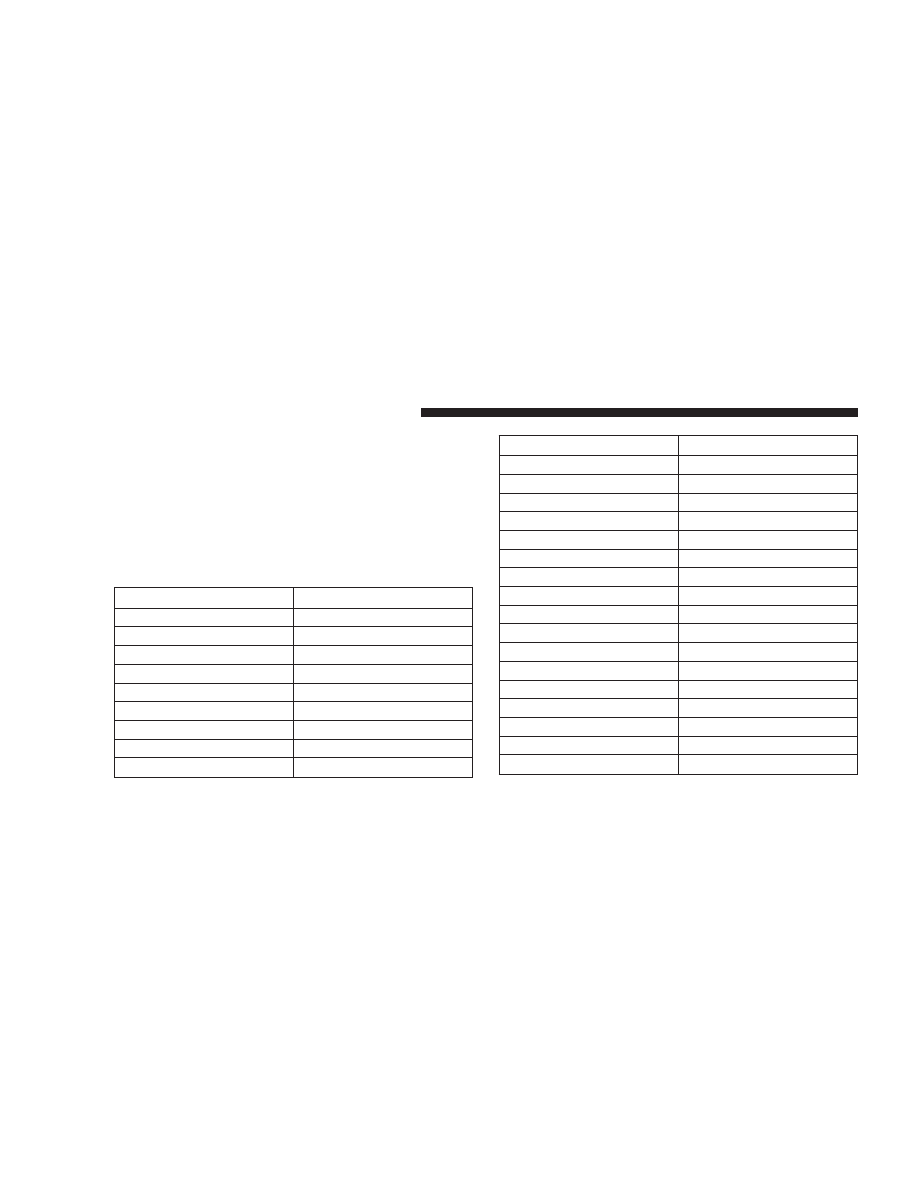Dodge Diesel (2004 year). Manual - part 12

PTY (Program Type) Button
Pressing this button once will turn on the PTY mode for
5 seconds. If no action is taken during the 5 second time
out the PTY icon will turn off. Pressing the PTY button
within 5 seconds will allow the program format type to
be selected. Many radio stations do not currently broad-
cast PTY information.
Toggle the PTY button to select the following format types:
Program Type
Radio Display
Adult Hits
Adlt Hit
Classical
Classicl
Classic Rock
Cls Rock
College
College
Country
Country
Emergency
ALERT!
Emergency Test
Test
Information
Inform
Jazz
Jazz
Program Type
Radio Display
Foreign Language
Language
News
News
Nostalgia
Nostalga
Oldies
Oldies
Personality
Persnlty
Public
Public
Rhythm and Blues
R & B
Religious Music
Rel Musc
Religious Talk
Rel Talk
Rock
Rock
Soft
Soft
Soft Rock
Soft Rck
Soft Rhythm and Blues
Soft R&B
Sports
Sports
Talk
Talk
Top 40
Top 40
Weather
Weather
180
UNDERSTANDING YOUR INSTRUMENT PANEL